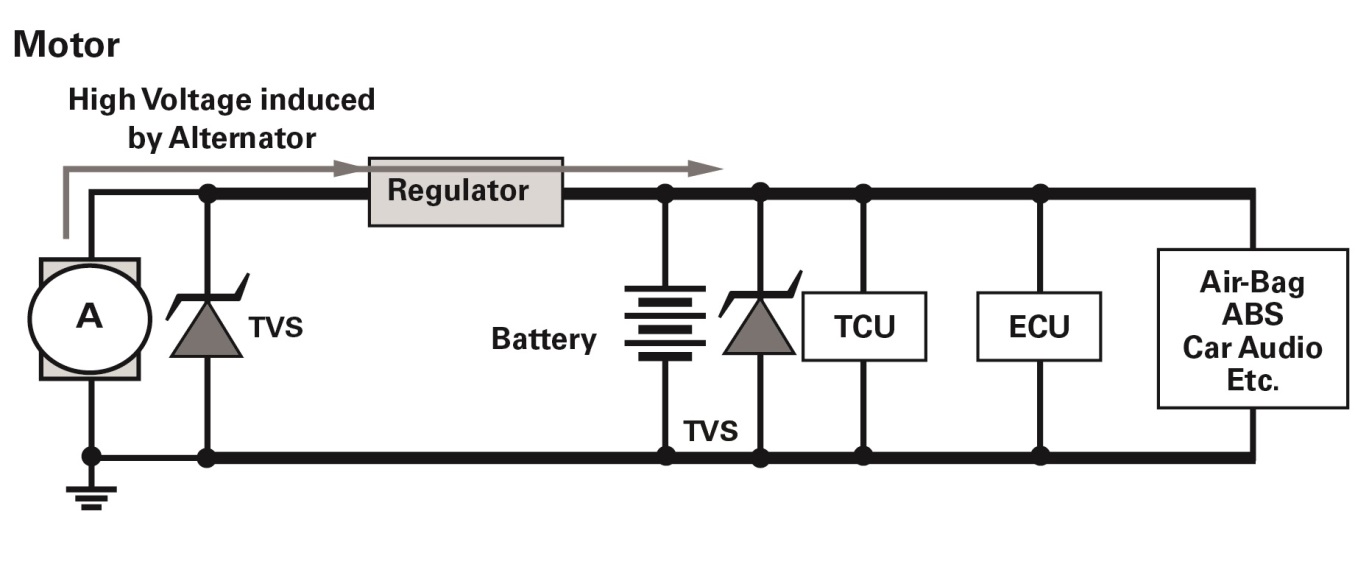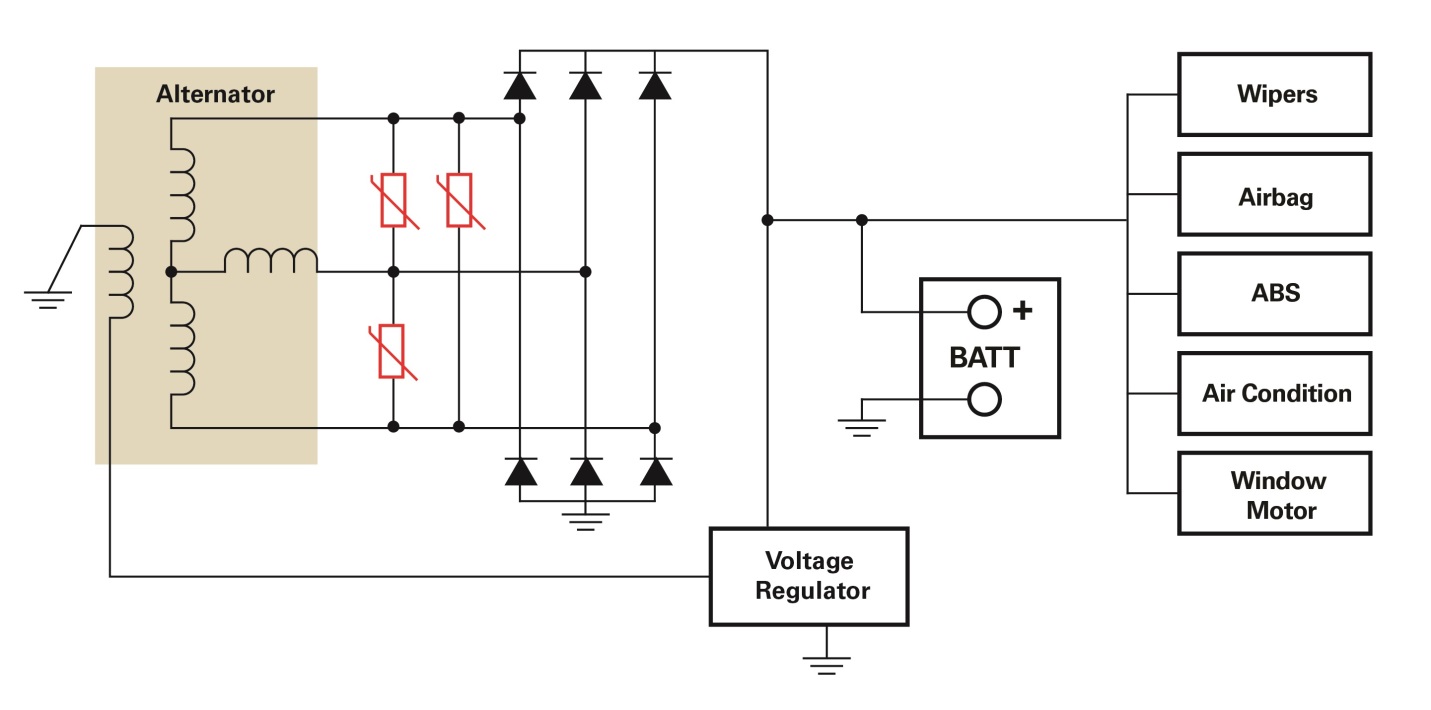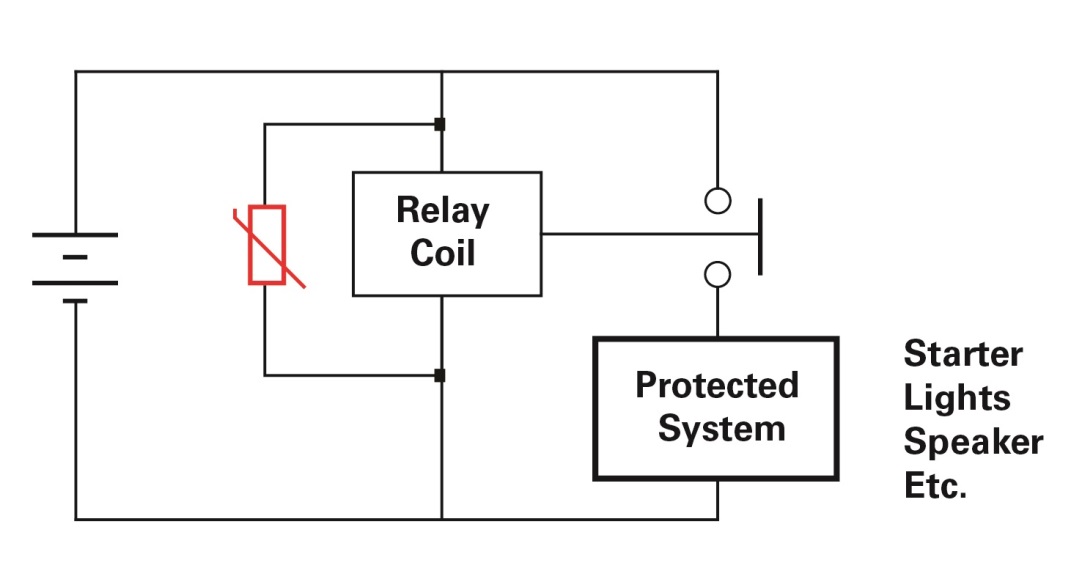Having trouble with your car’s load dump?
Circuit protection technologies safeguard automotive electronics from damaging load dump.
By Jim Colby, Manager, Business & Technology Development, Semiconductor Business Unit, Littelfuse.
Safety is critical in automotive design. Cars aren’t cheap, so it’s necessary to protect the investment of the vehicle’s owner. Most importantly, people’s lives are at stake. That’s why modern automobile manufacturers incorporate various safety features, including airbags, stability control and tire pressure monitoring. But safety in design goes beyond those obvious protective systems. Safety is a central design consideration for any piece of electronics within the automobile - no matter how large or small.
Whether under the hood or in the cabin, today’s advanced chipsets are highly susceptible to numerous electrical hazards common to the inherently harsh automotive environment. Typical automotive electrical hazards or transients include lightning, ESD and switching loads in power electronics circuits.
Uncontrolled load dump as a safety hazard
In modern automotive designs, all on-board electronics are connected to the battery and the alternator. The alternator is the main source of electrical transients—the worst of which is load dump. This condition occurs when a discharged battery is disconnected while the alternator is generating current and other loads remain on the alternator circuit. If left alone, the electrical spikes and transients will be transmitted along the power line, leading to malfunctions in individual electronics/sensors or permanent damage to the vehicle’s electronic system. Of course, uncontrolled load dump threatens the safety and reliability of the vehicle.
Automotive load dump protection
Circuit protection devices, including TVS diodes and varistors, are the best way to safeguard sensitive electronics against load dump. TVS Diodes are silicon avalanche devices selected for their fast response time (low clamping voltage) and low leakage current, but also because they have no inherent wear out factor. Varistors are typically used as the front-line solution for transient surge protection. Examples include ultra small surface-mount Multi-Layer Varistor (MLV) devices for protecting small electronics and traditional mid-range Metal Oxide Varistors (MOVs) for safeguarding small machinery, power sources and components.
In most modern alternators, the load dump amplitude is suppressed or clamped by adding the limiting TVS diodes at the source of disturbance. Disturbance transients should be suppressed internally or at the terminals of the source by the suppression (TVS diode) devices. As a best practice, the designer should place the TVS diode as close to the source as possible. The following schematic shows the TVS diode in place and the circuits being protected from load dump.

Additional circuit protection solutions for safeguarding against alternator transients involve the use of AEC-Q200-compliant MOVs. Consider the following examples:
- An AUMOV series varistor can be connected in a Y or Delta configuration with the winding coil of the alternator to clamp the transients.

- Protect vehicle subsystems (e.g. airbag, powertrain and climate control) from alternator transients with an AUMOV series varistor. Use it as a shunt for the transient surge to protect the DC power line against the surge.
 from alternator transients with an AUMOV series varistor.jpg)
- For protecting against automotive relay surges, use an AUMOV series varistor to absorb the arcing energy from the energy released by the magnetic fields of the relay.




